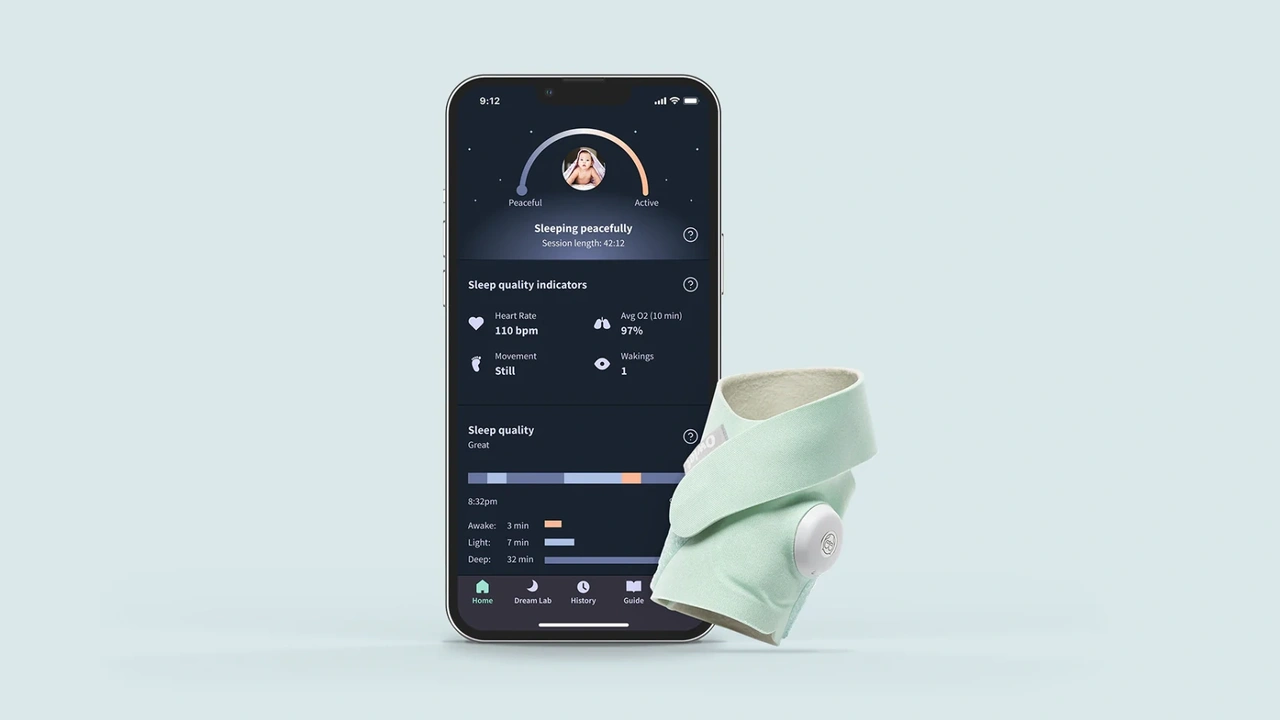Everything You Need to Know About Owlet’s Dream Sock
Jan 10, 2023
The original Owlet Smart Sock was an innovative piece of wearable tech known for delivering real time heart rate and oxygen vitals on your baby. And while it was really popular with many parents, in particular parents of preemies, it came under fire by the FDA and Owlet pulled their Smart Sock from shelves.
But luckily they’d already been planning the release of their Dream Sock and it didn’t take them long to pivot.
So what are the differences? On the surface, the Dream Sock looks exactly the same as the third generation Smart Sock. It seems to mimic the dual velcro design with one strap looping around the ankle and securing itself to the other side to keep a tight fit. The sensor can easily be removed and charged in the base station – which also looks exactly the same.
But where it differs is the Smart Sock had features notifying users based on heart rate and oxygen level readings that fall outside of preset values. The Dream Sock no longer sends notifications based on that.
In asking the brand myself, they’ve positioned the Dream sock as –
A sleep solution that uses a variety of Sleep Quality Indicators such as movement, heart rate, oxygen level, wakings, etc. to determine your child’s sleep state and sleep quality and prompt you if your child is uncomfortable or needs your assistance to sleep more soundly.
The sock is still able to read those vitals, but they use them as indicators of “sleep state and sleep quality.” When the sock is on and you open their new Dream app, you’ll be able to see those indicators along with current movement patterns and how many wakings have been reported.
Rather than showing you second-by-second oxygen levels like before, it’s now only showing a 10-minute historical average of oxygen.
A common question is if oxygen levels get low, will it still alert you as it did before with the Smart Sock? Technically yes, but the alert would be for “poor sleep quality”, not low oxygen. Because it’s a metric being tracked in their multifactorial sleep algorithm, if it’s abnormally low it’ll report that sleep quality is suboptimal and trigger a lavender alert on your base station and phone.
Will it take ten minutes to alert because it’s reporting a 10-minute oxygen average? No, it’ll be instantaneous.
The new Dream app now includes
- A summary of your baby’s sleep for the night.
- A restfulness bar which visually sums up everything the sock is tracking.
- Day-by-day view of your baby’s sleep patterns (no subscription required).
- General sleep tips for you based on your baby’s age.
- Dream Lab (Sunsetting on August 31, 2022) which was a short-lived feature that felt like an in-app sleep coaching, but according to Owlet, it will be replaced with a new feature called Predictive Sleep which tells you exactly when to put your little one down.
While the sock is the star, Owlet does offer the connected monitor to see your baby as well.
In the past, I’ve hated it as I thought the connection was pretty bad. However on this go, I’ve actually been happy with it. It’s a fixed camera and seems to load fast and delivers a decent image overall. While it’s not as clean as Cubo AI, I’d deem it a perfectly serviceable monitor. That said, it doesn’t wow me as other options like Miku which has made drastic improvements since it’s buggy initial launch.
To round it out, let’s hit on one final question – what about the old Smart Socks? Can you still use them?
According to Owlet, older users do have the option to convert their Smart socks to Dream socks. Unfortunately I haven’t done this myself yet but this link sheds a little more light on the process.
Overall, the Dream Sock is very reminiscent of it’s ever-popular predecessor, the Smart Sock. While it largely functions similarly with the focus being on “sleep” rather than “oxygen,” it seems to have appeased the FDA gods. However, many parents have expressed growing concern about the effects of wearable tech on babies for long stretches which may sour their desire for a once-known registry “must have.” With non-contact options like Nanit, Miku and Cubo AI available and featuring advanced insights and superior camera functionality, Owlet may have lost its edge.
Stay connected.
Join our mailing list to receive the latest tips, guides and video updates.

